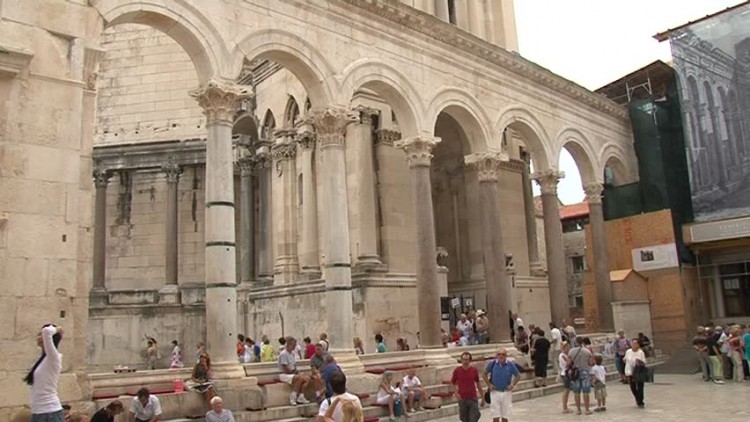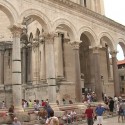A pearl on the Adriatic coastline, Split is among the most explored holiday destinations in Croatia. This town is constructed around one of its top tourist attractions namely Diocletian’s Palace, which dates back to Ancient Rome. A living monument, the leftovers of the Palace are home to slim winding alleys loaded with stores, art galleries, churches and much more. A tiny town, Split is simple to navigate and features a number of things to see and do no matter what time of day or night.

People’s Square (Pjaca) in Split
In the other half of the 13th and in the beginning of the 14th century, Split was going through a period of growing development, which reflected on its urban image. The city wasn’t only connected with Diocletian’s Palace. New walls were constructed on the western suburbs which created the opportunity for further development.
On this location today’s People’s Square (Pjaca, Saint Lawrence Square) was built, which was first mentioned in 1255. In the 15th century, the Venetians have built Ducal Palace and Town Hall in the same location, which made People’s Square the new city center, while the Peristlye has become a religious center with magnificent Cathedral of Saint Dominus. This was typical layout during that time in Europe and Apennine peninsula.
Rich nobles built their palaces on the People’s Square. The whole area became overcrowded by the 19th century. The city government decided to demolish the majority of gothic buildings from the 15th century, which made city more fluent, but it los numerous valuable constructions, including the Ducal Palace. At lease, Old Town Hall was preserved.
Saint Lawrence Square have changed its name several times to Arms Square and Piazza dei Signori, and in the beginning of the 20th century was named People’s Square, the name it still holds today. The residents of Split usually calls it Pjaca. The use of nickname is appropriate to the area which was a common gathering place for centuries. Today, mainly the boardwalk Riva holds that role, even though Pjaca can also be very vibrant, especially during the summer, when this enjoyable area is filled with tourists. Check out some of the accommodation options close to the Pjaca at Split-Rentals.co.uk website
Sphinx on the Peristyle

The beautiful Peristyle is famous for its notable Cathedral of Saint Dominus which dominates the Peristyle. But there is one detail that draws the attention of visitors – an Egyptian sphinx which is located on the western access to the church.
Of course, this brings up the question what is a sphinx doing in the center of Split. The answer is to be found, as expected, in the time of Diocletian’s reign and not long after. Diocletian considered himself as a divine ruler, like pharaohs, so he adopted their burial ritual to place the sphinx on the entrance of the final resting place.
As the Diocletian’s Mausoleum was located on the site of today Cathedral of Saint Dominus, so the sphinx was placed on the Peristyle. It was probably not the only one, they were probably in pair, or even four of them. Besides, there were more than ten sphinx in Split and its surroundings at the time, but some of them were lost or heavily damaged, so the one on the Peristyle is best preserved.
The sphinx were built from black granite and is two and a half meters long, and one meter tall. It is an ancient sculpture, built probably in the time of Tuthmose I or Tuthmose III. Those members of the 18th Dynasty ruled in the 16th and 15th century BC, so it is clear that it is a truly ancient monument.
The sphinx was a mythical creature with the body of a lion, while the head can be from a human or some other animal. The sphinx on the Peristyle has a human head, and it is interesting that her front limbs are human and not animal. Between its extended hands, there is a sacrificing vessel which was rare for sphinxes, which is another detail that makes this monument unusual and special.

